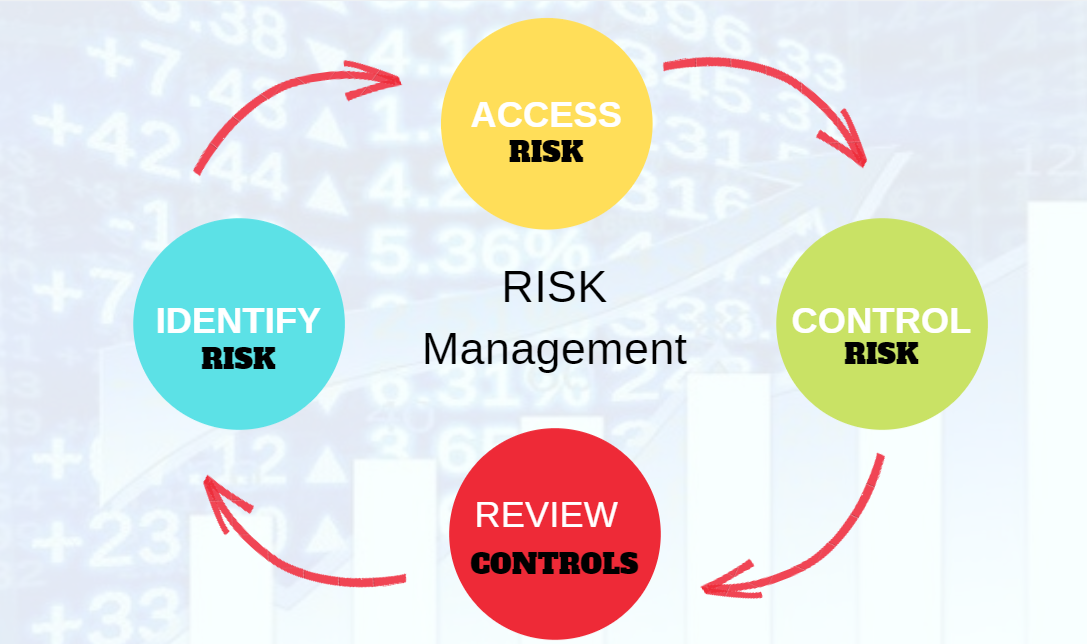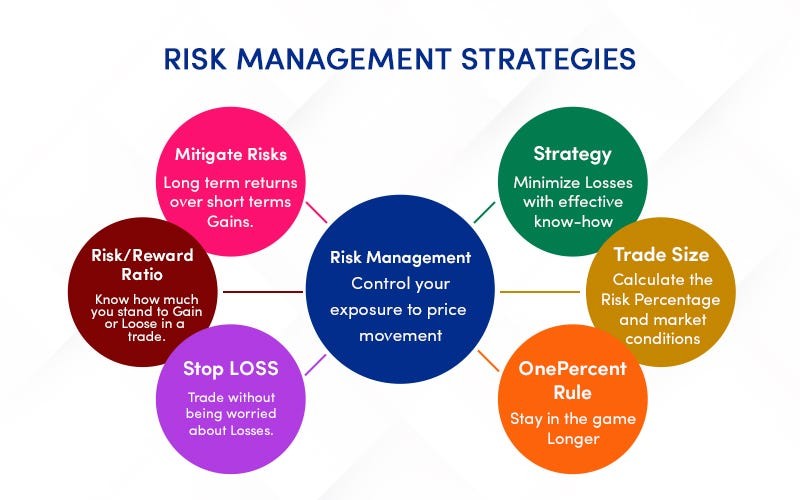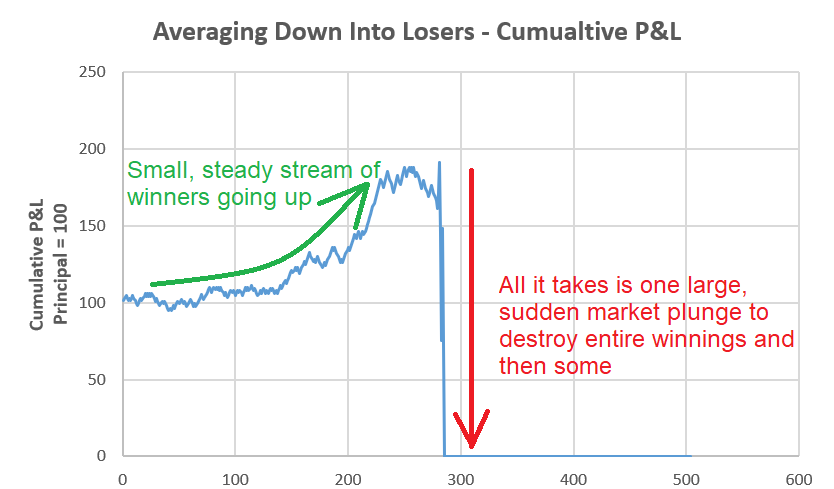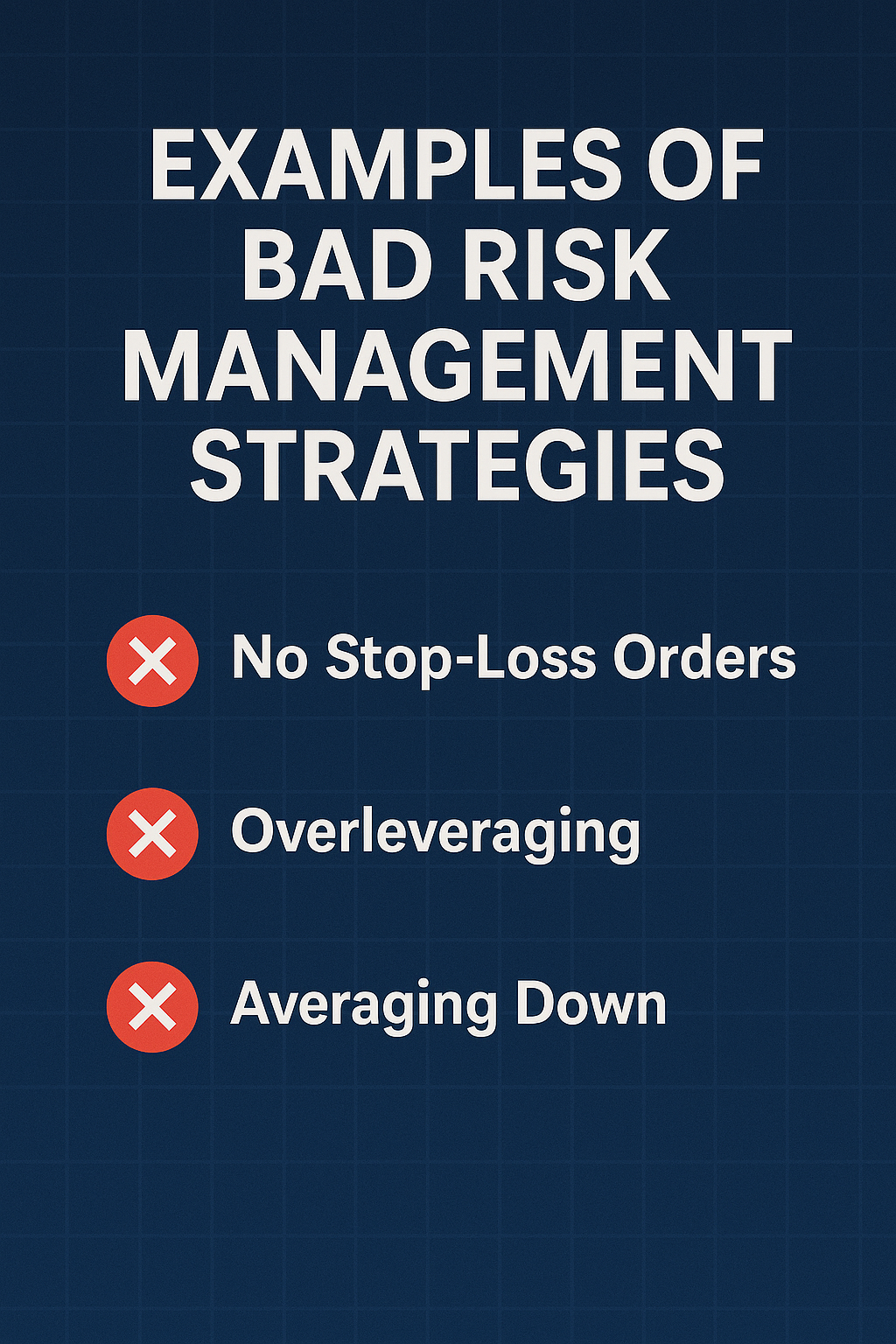Risk management is the foundation of successful trading. It helps traders protect their capital, control emotions, and remain consistent across different market conditions.
However, not every trading action or behaviour that appears conservative or cautious qualifies as a valid risk management strategy. Some practices may even increase risk rather than reduce it.
This article explores what risk management in trading truly entails, highlights widely accepted techniques, and then focuses on clarifying what is not an example of a proper risk management strategy.
What Is Risk Management in Trading?

Risk management involves processes and strategies aimed at minimising potential losses and safeguarding capital in financial markets. Traders employ various tools to determine how much to risk on each trade, where to place stop-losses, and how to manage position sizes. The goal is to maintain consistent performance while avoiding catastrophic drawdowns.
However, risk management does not aim to eliminate losses completely. Instead, it's about controlling the size and impact of those losses so that profitable trades can outweigh them over time.
Core Principles of Risk Management in Trading
Before we can distinguish non-strategies, it's crucial to understand what constitutes proper risk management. These principles form the foundation of any reliable system:
Capital Preservation
The primary rule in trading is to avoid losing all your money. Effective risk management prioritises capital preservation, even if it results in smaller profits or missed opportunities.
Risk-to-Reward Ratio
Every trade should have a calculated risk-to-reward ratio, such as risking $100 to gain $300. A positive ratio ensures long-term profitability, even with a lower win rate.
Stop-Loss and Take-Profit Orders
These orders automatically close a trade once a certain price is hit. Stop-losses limit losses, while take-profit levels lock in gains.
Position Sizing
It involves determining the appropriate trade size based on your account balance and risk tolerance. Smaller trades help reduce the impact of a single loss.
Diversification
Spreading investments across different instruments or markets helps reduce total exposure to any single event.
These methods are universally accepted as risk management strategies because they proactively minimise potential losses and allow traders to recover from setbacks.
Examples of Valid Risk Management Strategies

1) Using Stop-Loss Orders
A stop-loss is a price level at which you exit a losing trade to prevent further loss. It is one of the most basic and effective risk management tools.
2) Limiting Trade Size
By restricting the allocated capital to each trade (often just 1% or 2% of the account balance), traders ensure that a single loss won't derail their entire portfolio.
3) Hedging Positions
Hedging involves opening opposing positions in correlated markets (like buying gold while shorting USD) to minimise overall risk.
4) Setting Daily Loss Limits
Many traders set a maximum amount they're willing to lose in a single day. If they reach this limit, they stop trading to avoid emotional decision-making.
These examples illustrate proactive planning and disciplined execution—traits central to real risk management.
Which Is Not an Example of a Risk Management Strategy?

Now that we've clarified what constitutes proper risk management, let's look at actions that may seem cautious or strategic — but actually, increase risk:
Averaging Down: The Illusion of Control
Averaging down refers to adding more capital to a losing position in the hope of lowering the average entry price. For example, if you bought a stock at $100 and it falls to $90, you buy more to bring your average down to $95.
At first glance, this looks like a strategy to improve your recovery chances—but in reality, it increases your exposure to a losing trade. Here's why it fails the test of sound risk management:
It increases risk rather than limiting it.
There is no clear exit plan if the trade goes against you.
It ties up more capital in a position that may never recover.
It leads to emotional decision-making and denial of the original mistake.
Professional traders and institutions rarely average down unless they're operating within a hedged, fundamentally backed strategy with long-term capital allocation. For most retail traders, averaging down is a psychological trap and not a strategy.
Why Averaging Down Is Not Risk Management
Let's break this down using the principles of risk management.
Violates Position Sizing
When you add to a losing trade, your position size increases beyond the initial calculated risk, exposing more capital to a poor decision.
Lacks Defined Risk Parameters
Risk management strategies are pre-planned. Averaging down is often a reaction to being wrong, not a part of a structured plan.
Encourages Overconfidence
Many traders average down, believing the market will recover. This optimism overlooks both technical and fundamental signals that suggest a genuine trend reversal.
Escalates Emotional Trading
Instead of cutting losses, averaging down can escalate a situation into "revenge trading," where emotions overthrow logic. Therefore, while it may look sophisticated, averaging down lacks the characteristics of a sound risk management approach.
Other Actions Mistaken as Risk Management (But Aren't)

In addition to averaging down, here are other actions that may appear strategic but don't qualify as risk management:
Holding Trades Without Stop-Losses
Some traders argue that they "don't use stop-losses" to avoid being prematurely stopped out. In reality, this exposes them to unlimited losses, which is the opposite of managing risk.
Over-Diversification
While diversification is a valid concept, over-diversifying into too many trades can dilute focus and complicate management. You may end up with exposure to correlated assets without realising it.
Relying Solely on High Win Rate Systems
A system with a high win rate may still fail if the losses are large. Risk management must be in place regardless of how often the system wins.
Using Martingale Strategies
Martingale involves doubling down on losing trades. Like averaging down, this increases risk exponentially and often leads to margin calls.
Psychological Traps That Undermine Risk Management
Risk management is not only a technical discipline but also a psychological one. Many traders abandon their rules in the heat of the moment. Common psychological traps include:
Overconfidence: Believing your market view is always correct leads to ignoring exit strategies.
Fear of Missing Out (FOMO): Entering trades without a plan just because others are making money.
Revenge Trading: Trying to win back losses by making impulsive decisions.
Real risk management requires emotional discipline, not just theoretical knowledge.
How to Build a Robust Risk Management Plan in Trading?
1. Define Your Risk Per Trade
Decide what percentage of your account you're willing to risk on a single trade. Most professionals recommend 1 to 2%.
2. Set Maximum Daily and Weekly Loss Limits
If you hit your limit, walk away from the screen. It prevents emotional trading and large drawdowns.
3. Predefine Stop-Loss and Take-Profit Levels
These should be based on technical levels or volatility, not random figures.
4. Regularly Review and Adjust
As your account grows or your strategies evolve, your risk management approach should also adapt. A written plan that you stick to—even during drawdowns—is one of the best defences against poor decisions.
Case Study: Why Not Using Risk Management Leads to Failure
Let's consider a hypothetical trader who trades without risk management:
He enters a trade in EUR/USD without a stop-loss.
The market moves 100 pips against him.
He averages down, adding more exposure at a worse price.
Margin requirements increase, and he gets a margin call.
He exits with a massive loss, wiping out 30% of his account.
Contrast this with a trader who uses stop-losses and limits his risk to 1% per trade. Even after several losing trades, this trader still has the capital to continue.
This case highlights how the absence of risk management—or the use of strategies like averaging down—can destroy trading capital.
What Traders Should Do Instead
Instead of relying on false risk strategies, traders should adopt:
Backtested strategies with built-in stop-loss parameters
Tools like ATR (Average True Range) to calculate position size
Daily checklists that enforce rules
Journaling every trade to review risk-reward decisions
Education and discipline are your greatest allies. Risk management isn't about avoiding losses—it's about surviving them and staying in the game.
Conclusion
In trading, success doesn't come from being right every time. It comes from managing your risk when you're wrong.
Averaging down may seem like a method to improve a position, but it violates all the principles of risk control. If you're serious about trading in 2025 and beyond, eliminate the strategies that masquerade as risk management and focus on those that genuinely protect your capital.
Disclaimer: This material is for general information purposes only and is not intended as (and should not be considered to be) financial, investment or other advice on which reliance should be placed. No opinion given in the material constitutes a recommendation by EBC or the author that any particular investment, security, transaction or investment strategy is suitable for any specific person.

























